With this tutorial, we will be showing you the process of installing the UniFi Controller on a Raspberry Pi
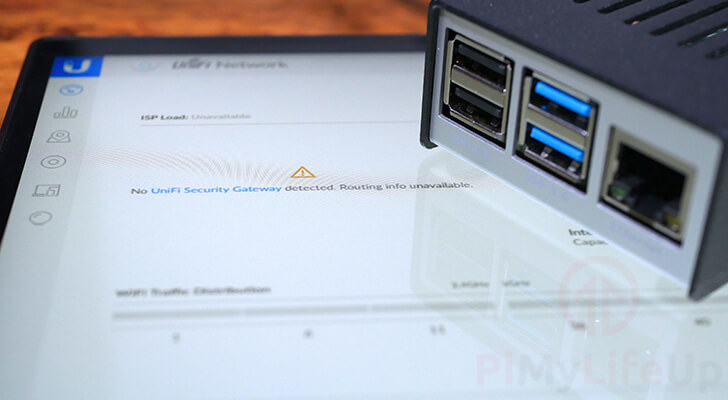
UniFi is a range of network devices created by Ubiquiti. These devices range from Wi-Fi access points to security gateways and switches.
Setting up the UniFi software on a Raspberry Pi is a fairly straightforward process as it just relies on the multi-platform Java runtime to run.
Using the UniFi network controller, you can manage all the UniFi devices that are a part of your network. You will also be able to use this dashboard to see the statistics of your UniFi network.
Please note that before proceeding you will need to be running a 64-bit version of Raspberry Pi OS for this tutorial to work. Recent changes to UniFi have broken support for 32-bit operating systems.
Equipment List
Below is a list of the equipment that you will need to set up the Unifi Network Controller software on your Raspberry Pi
Recommended
Optional
This tutorial on setting up the UniFi Network Controller was tested on a Raspberry Pi 5 running the latest version of Raspberry Pi OS Trixie 64-bit.
Video
The video we have embedded below will walk you through all of the steps needed to set up the UniFi network server on your Raspberry Pi. If you prefer to go at your own pace, be sure to follow our written instructions below instead.
Preparing your Raspberry Pi for the UniFi Controller
In this section, we will prepare the operating system to run the UniFi software. These steps mainly revolve around getting the database server UniFi requires installed on your Raspberry Pi.
Getting Ready
1. The first thing you should do is ensure that your Raspberry Pi is running up to date packages.
To update all packages, you will be required to run the following command.
sudo apt update
sudo apt upgradeCopyAdding Entropy using rng-tools
2. To improve the startup speed of the UniFi controller software on our Raspberry Pi, we need to install rng-tools.
We will utilize this package to ensure the Raspberry Pi has enough entropy for the random number generation that the UniFi software uses.
sudo apt install rng-toolsCopy3. We now need to make a slight change to the rng-tools configuration.
Begin editing the config file by running the following command.
sudo nano /etc/default/rng-tools-debianCopy4. Within this file, find and uncomment the following line.
Find
#HRNGDEVICE=/dev/hwrngCopyReplace With
HRNGDEVICE=/dev/hwrngCopyBy uncommenting this line, we are adding to the amount of entropy (The amount of randomness) that the system has available.
The Raspberry Pi features an integrated random number generator that we can utilize to increase the entropy pool.
5. Once you have made the change, save the file by pressing CTRL + X, then Y, followed by ENTER.
6. Finally, restart the rng-tools service by running the command below.
sudo systemctl restart rng-toolsCopyOnce the service has finished restarting, it should now be safe to proceed to the next section of this guide.
Installing LibSSL1.1
7. Due to the version of MongoDB that we require to run the Unifi Controller on our Raspberry Pi, we will need to install LibSSL1.1.
As this package is no longer available through the Raspberry Pi OS repository, we will need to wget it manually from the Ubuntu packages.
wget http://ports.ubuntu.com/pool/main/o/openssl/libssl1.1_1.1.1f-1ubuntu2_arm64.deb -O libssl1.1.debCopy8. With LibSSL1.1 now downloaded, we will need to install the package itself. You can install this by simply using the command below within the terminal.
sudo dpkg -i libssl1.1.debCopyInstalling MongoDB to your Raspberry Pi for the UniFi Controller
9. To use the UniFi Controller on your Raspberry Pi, we will need to install MongoDB.
This is the database server that UniFi uses to store all of its data. As we can’t rely on the package repository, we will need to follow some additional steps.
For this first step, we will download MongoDB 4.4.18 to our Pi. We are installing 4.4 as this is currently the only supported release for the UniFi Controller that is compatible with the Raspberry Pi.
wget https://repo.mongodb.org/apt/ubuntu/dists/focal/mongodb-org/4.4/multiverse/binary-arm64/mongodb-org-server_4.4.18_arm64.deb -O mongodb.debCopy10. Once the package is downloaded, install it by using the following command within the terminal.
sudo dpkg -i mongodb.debCopy11. Now that we have installed the MongoDB server, set it to start when your Raspberry Pi boots using the command below.
sudo systemctl enable mongodCopy12. Finally, start MongoDB by running the command shown below in the terminal.
This will start the server immediately, so we won’t have to wait till our device restarts.
sudo systemctl start mongodCopyInstalling the UniFi Controller to the Raspberry Pi
1. Our first task is to add the UniFi repository to our sources list.
We can achieve this by running the command below.
echo 'deb [arch=amd64 signed-by=/usr/share/keyrings/ubiquiti-archive-keyring.gpg] https://www.ui.com/downloads/unifi/debian stable ubiquiti' | sudo tee /etc/apt/sources.list.d/100-ubnt-unifi.list >/dev/nullCopyYou might notice that we are using “amd64” and not “arm64” or “armhf“. This is due to Ubiquiti not having their repository set up to mark “arm64” as compatible. However, it doesn’t hugely matter as, at the moment, it will still download files compatible with our Raspberry Pi.
2. We now need to add the repository’s GPG key by using the following command.
curl https://dl.ui.com/unifi/unifi-repo.gpg | sudo tee /usr/share/keyrings/ubiquiti-archive-keyring.gpg >/dev/nullCopyThe GPG key is what helps tell the package manager it is downloading the correct package.
3. As we made changes to the repositories, we need to now update the package list by running the command below.
sudo apt updateCopy4. Now finally, we can install version 21of the OpenJDK runtime as well as the Unifi Controller software itself to our Raspberry Pi by running the following command.
sudo apt install openjdk-21-jre-headless unifiCopyInstalling UniFi through this method will automatically set up a service. This service will automatically start the UniFi software at boot.
First Boot of the UniFi Controller on your Raspberry Pi
In this section, we are going to walk you through the initial configuration steps of the UniFi software.
1. First, retrieve the local IP address for your Raspberry Pi.
If you have terminal access to your Pi, you can use the following command.
hostname -ICopy2. With your Raspberry Pi’s IP address handy, go to the following web address in your favorite web browser.
Ensure that you replace “<IPADDRES>” with the IP of your Raspberry Pi.
https://<IPADDRESS>:8443If you run into a certificate error, it is safe to ignore it as we know what device we are connecting to.
3. The first step requires you to give a name for your Raspberry Pi powered UniFi controller (1.).
You are also required to agree to the end-user license agreement and terms of service from UniFi, once you have read through them, click the checkbox (2.).
Once all done, click the “Next” button (3.) to proceed.
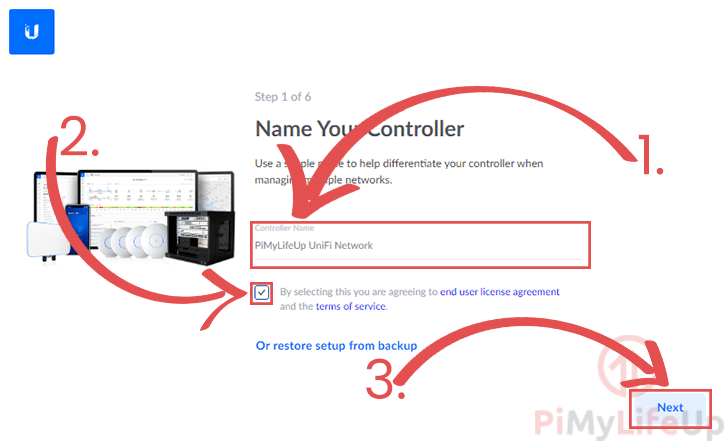
4. Next, you will need to sign in to your Ubiquiti account (1.).
If you don’t already have an account, you can register at the Ubiquiti website.
Once you have entered your login details, proceed by clicking the “Next” button.
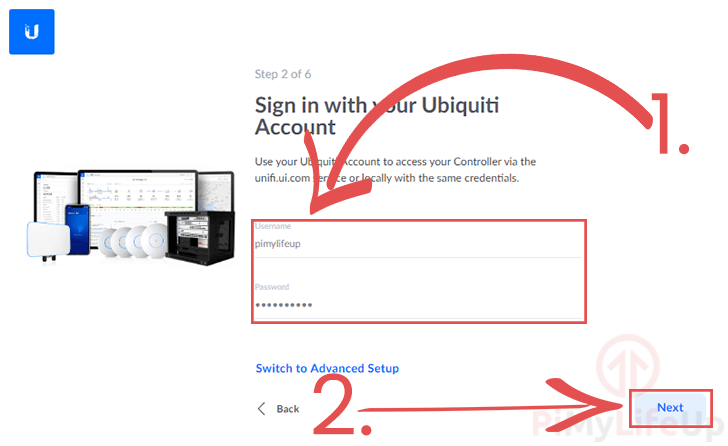
5. Tweak the settings on this page that best suits your needs.
Once configured, click the “Next” button.
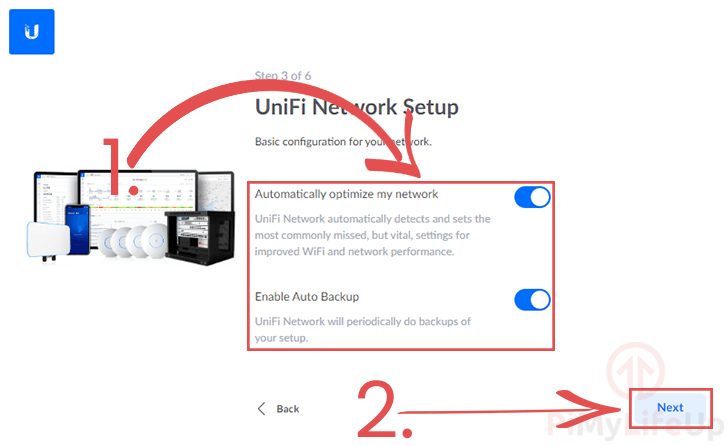
6. Use this screen to connect your Pi UniFi Network controller to the devices on your network.
To proceed, click the “Next” button.
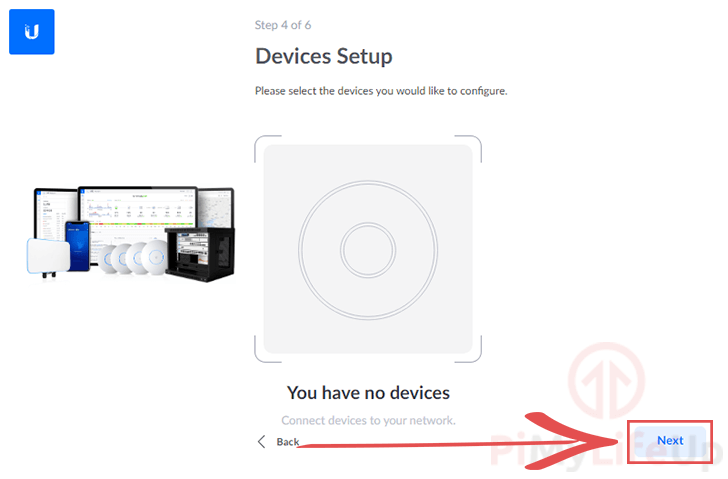
7. Now give your new Wi-Fi network a name and a password.
Once you have configured your WiFi details (1.), click the “Next” button to proceed (2.).
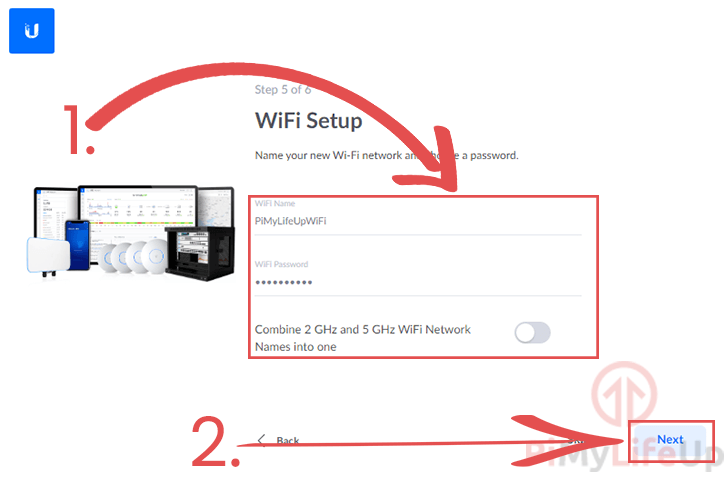
8. This final screen will get you to review all your settings.
You will also be able to use this screen to set both the country and timezone (1.). Make sure you set these before continuing.
Once you have verified everything is correct, you can now click the “Finish” button (2.) to finish the setup process.
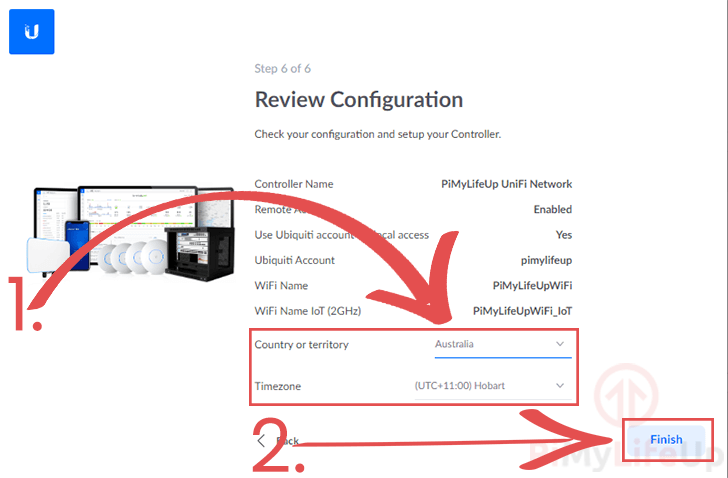
7. At this point, you should now have successfully set up the UniFi network controller on your Raspberry Pi.
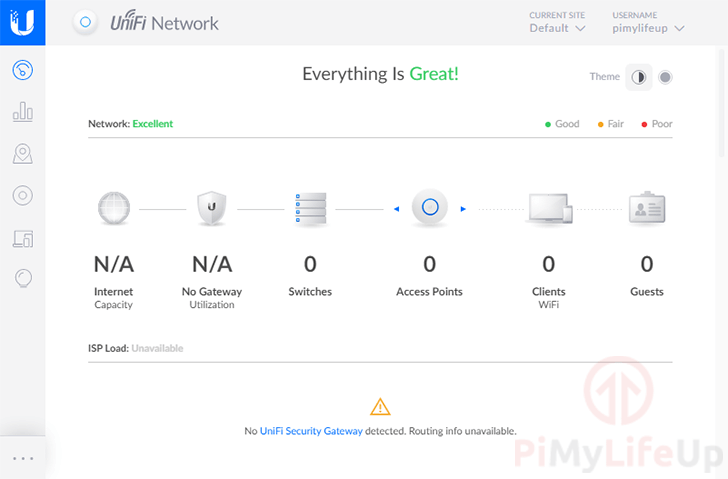
Conclusion
Hopefully, at this point in the tutorial, you will now have the UniFi controller installed and running on your Raspberry Pi.
The Pi is a great base for your network controller as it can run 24/7 with little power.
If you have run into any issues setting up the UniFi software, feel free to comment below.
Check out our many other Raspberry Pi tutorials to learn more about this versatile system.




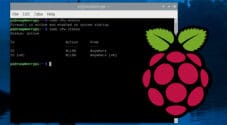




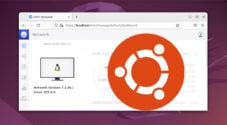
Absolutely flawless procedure, thanks a million for this..!
Hey Emmet!
Just ran through this guide on a RPi 4 Model B and it worked without a hitch.
Thanks for the detailed instructions.
I followed every step without a hitch until the following command:
sudo apt install openjdk-21-jre-headless unifi
I keep getting the “Error: Unable to locate package unifi” response when trying to run the command. I separated the JDK install from the command and got that to install no problem. So trying to just install “unifi” fails.
I’ve double checked all the previous steps and they all completed with no errors, files exist with proper content in them, etc.
Hi John,
That is unsual and sounds like the Unifi repository han’t been read in properly.
When you run “sudo apt update” is there any warnings or errors that pop up, especially ones that are related to the Unifi package repository.
Kind regards,
Emmet
Will this current step by step install work on the new Pi OS Pixie, if no, will you be updating it?
Current one is great and works, but I tried it on my Pi5 running Trixie and it won’t install.
Thanks
Hi William,
There were a few steps that needed adjusting but it should now install again.
Kind regards,
Emmet
Worked great, thanks for making the adjustment.
Hi,
just set up my first raspberry pi and it worked!
Thank you very much!
One question, we implemented a service that starts the controller on reboot.
Means that if i will now shut down the raspberry and move it to my new house next week and start it, the Controller will be automatically started?
Thanks for the reply and sorry for the beginner question.
Hi Sebastion,
Yes once the Raspberry Pi powers back on, it should automatically start up the UniFi controller.
Kind regards,
Emmet
I’m having problems with the mongo db. below is my error for an bookworm lite install which was updated and upgraded rite after install (and before mongo attempt). did a copy/paste of all the steps in order so don’t think that’s the problem.
sudo dpkg -i mongodb.deb
Selecting previously unselected package mongodb-org-server:arm64.
(Reading database … 92441 files and directories currently installed.)
Preparing to unpack mongodb.deb …
Unpacking mongodb-org-server:arm64 (4.4.18) …
dpkg: dependency problems prevent configuration of mongodb-org-server:arm64:
mongodb-org-server:arm64 depends on libc6 (>= 2.29).
mongodb-org-server:arm64 depends on libcurl4 (>= 7.16.2).
mongodb-org-server:arm64 depends on libgcc-s1 (>= 4.5).
mongodb-org-server:arm64 depends on libssl1.1 (>= 1.1.0).
dpkg: error processing package mongodb-org-server:arm64 (–install):
dependency problems – leaving unconfigured
Processing triggers for man-db (2.11.2-2) …
Errors were encountered while processing:
mongodb-org-server:arm64
while trying to dig around, I’m also getting this
The following packages have unmet dependencies:
mongodb-org-server:arm64 : Depends: libc6:arm64 (>= 2.29) but it is not going to be installed
Depends: libcurl4:arm64 (>= 7.16.2) but it is not installable
Depends: libgcc-s1:arm64 (>= 4.5) but it is not installable
Depends: libssl1.1:arm64 (>= 1.1.0) but it is not going to be installed
has anyone else had this problem trying to set things up?
Hi Tom,
I am unable to replicate the same issue. Have you made sure that you are running a 64-bit operating system, and in the case of this tutorial are you running Raspberry Pi OS?
Kind regards,
Emmet
thank you for the response. I think I missed the email notification saying there was something here or I just was too swamped with the day job to see. I’m going to redo all of this again but I believe I followed all the directions. I’ll be certain to make notes along the way. could you confirm if I should be using raspberry pi os with desktop or raspberry pi os lite? my plan is to try this again on a new card from step one or be able to show what steps I take to set things up
Hi Tom,
You should be running the 64-bit version of Raspberry Pi OS Lite Bookworm.
Kind regards,
Emmet